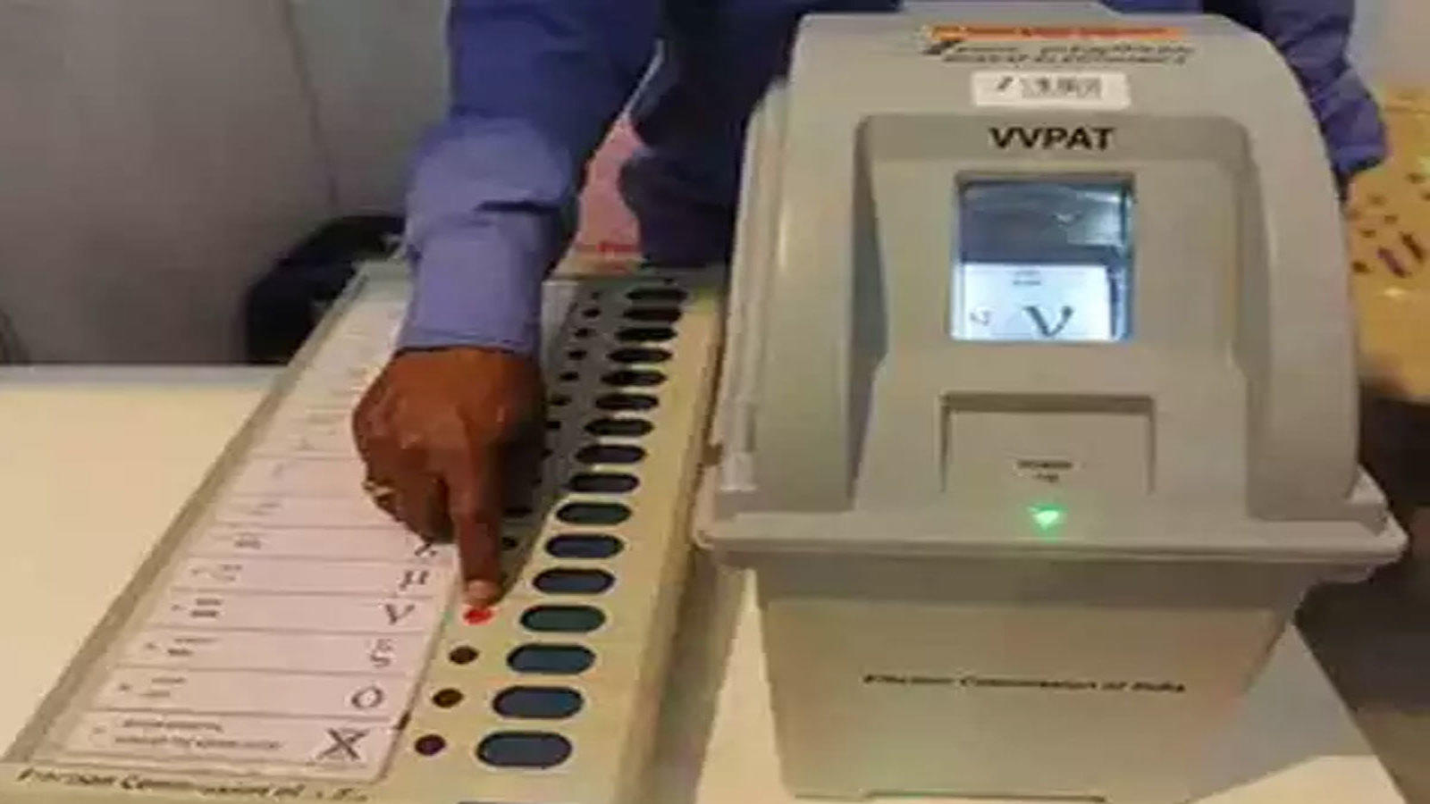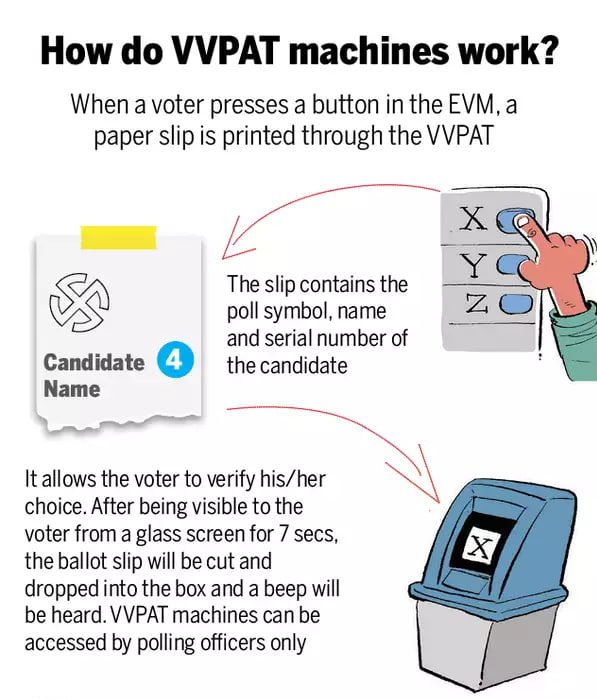Free Courses Sale ends Soon, Get It Now


Free Courses Sale ends Soon, Get It Now



Copyright infringement not intended
Picture Courtesy: https://economictimes.indiatimes.com/news/politics-and-nation/eight-cases-of-vvpat-evm-mismatch-in-lok-sabha-polls/articleshow/70323347.cms?from=mdr
Context: Activists raised a demand for a statistically sound VVPAT-based system of EVM audit that can detect instances of mismatch with 99% or 99.9% certainty.
Details
|
Electronic Voting Machines (EVMs) ●An EVM is an electronic device used for recording votes, consisting of a Control Unit and a Balloting Unit. Voters cast their votes by pressing buttons on the Balloting Unit. ●EVMs were first used in the Parur Assembly Constituency of Kerala in 1982. ●EVMs operate on batteries and do not require electricity. ●EVMs can record up to 2,000 votes. The number of candidates accommodated varies with different EVM models (up to 64 candidates with M2 EVMs and up to 384 with M3 EVMs). ●If an EVM malfunctions during polling, it is replaced without affecting the votes already recorded. ●EVMs are designed by the Technical Experts Committee of the Election Commission in collaboration with Bharat Electronics Ltd. (BEL) and Electronics Corporation of India Ltd. (ECIL). |
|
Voter Verifiable Paper Audit Trail (VVPAT) ●VVPAT is a system attached to EVMs that provides a paper trail for voters to verify that their votes are cast as intended. ●VVPAT does not run on electricity and uses a battery power pack. ●Voters can verify their votes through a printed slip containing the serial number, name, and symbol of the chosen candidate; it remains visible through a transparent window before falling into a sealed drop box. ●VVPATs were first used in a bye-election in the Assembly Constituency of Nagaland in 2013. |
Challenges with EVM Audit
Sample size and statistical accuracy
Definition of Population and Audit Protocols
|
To restore public trust in the electoral process, courts and election officials should seek expert advice and use scientifically sound EVM auditing procedures. |
Way Forward
Statistically Sound Auditing System
Clear Definition and Protocol
Implementation and transparency

|
Acceptance Sampling ● Acceptance sampling is a statistical measure used in quality control to determine the quality of a batch of products by testing a representative sample. ●It involves selecting a sample from a batch of products, testing them for defects, and deciding whether to accept or reject the entire batch based on the results of the sample. ●It is used when testing every product in a batch is impractical due to time or cost constraints, or when testing would render the product unusable (destructive testing). ●It is a quick method to make immediate decisions about batch quality, while comprehensive quality control involves systemic measures to ensure consistent quality throughout production. ●It doesn't guarantee 100% quality assurance, and there's always a risk of accepting defective products or rejecting good ones based on the sample results. |
Conclusion
Must-Read Articles:
Electronic Voting Machine (EVM)
Source:
|
PRACTICE QUESTION Q. In light of the recent controversy regarding the use of Electronic Voting Machines (EVM), what are the challenges before the Election Commission of India to ensure the trustworthiness of elections in India? (UPSC 2018) |
© 2024 iasgyan. All right reserved